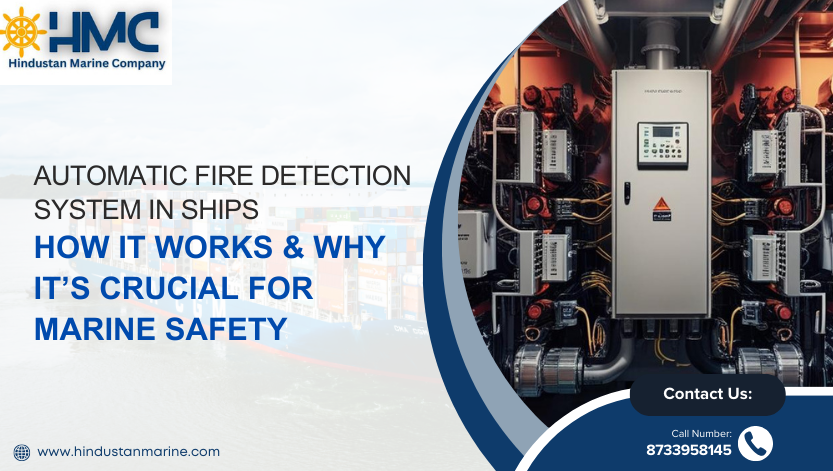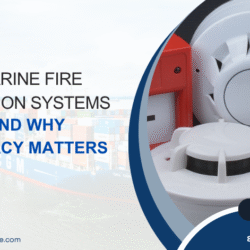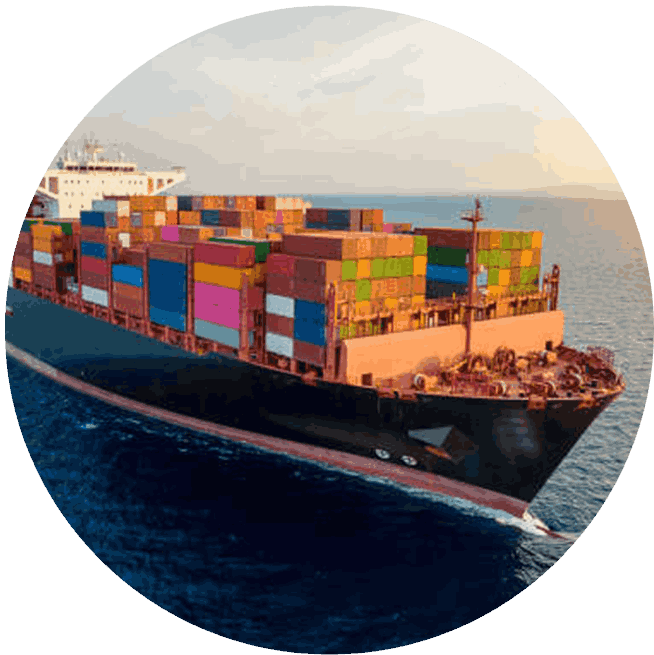
Automatic Fire Detection System in Ships – How It Works & Why It’s Crucial for Marine Safety
Fire is one of the most serious hazards onboard ships, especially in enclosed spaces like engine rooms, control cabins, and cargo holds. A delay of even a few seconds can lead to catastrophic losses at sea. That’s why modern vessels are equipped with an automatic fire detection system, designed specifically to operate reliably in the challenging marine environment. Installing a robust Fire Detection System is not only vital for crew and cargo safety—it’s also mandatory under IMO regulations.
According to a 2023 IMO safety report, engine room fires account for nearly 50% of shipboard fire incidents, making automated detection a non-negotiable priority in marine safety.
What Is an Automatic Fire Detection System in Ships?
An automatic fire detection system (AFDS) on a ship is a network of marine-certified detectors, control panels, and alarms that detect signs of fire—such as smoke, heat, or flame—and activate warning systems without manual intervention. These systems are designed to function reliably in salty, humid, and high-vibration marine environments.
How It Works on Board
- Detection Initiation
Sensors placed throughout the ship monitor for smoke, heat, or gas emissions. - Signal Transmission
Once a threshold is met, a signal is sent to the central fire detection control panel. - Alarm Activation
Audible alarms, flashing beacons, and bridge notifications are triggered immediately. - System Actions (Optional)
In some vessels, the system can automatically shut ventilation, isolate fuel lines, or activate fire suppression.
Marine-Grade Components of Fire Detection Systems
| Component | Marine Use Case |
| Smoke Detectors | Detects slow-burning fires in control rooms |
| Heat Detectors | Installed in galleys, engine rooms, and machinery |
| Flame Detectors | Used in high-risk zones like oil tanks or boiler rooms |
| Control Panels | Located on the bridge or ECR for real-time alerts |
| Interface Units | Connects with PA systems, ventilation, shutdown systems |
| Alarm Modules | Audible and visual signals for all decks |
All components are marine-certified (DNV, ABS, or LR-approved) and meet standards like SOLAS Chapter II-2 and IMO MSC.1/Circ.1456.
Types of Automatic Fire Detection Systems Used on Ships
1. Conventional Marine Systems
- Each zone (e.g., engine room, accommodation) has grouped detectors
- Easy for small- and mid-sized vessels
2. Addressable Systems
- Each detector has a unique ID
- Offers precise fault location—crucial in large vessels like tankers or cruise ships
3. Linear Heat Detection Systems
- Uses sensor cables to detect temperature changes over long areas
- Ideal for cargo holds and electrical ducts
4. Smoke Sampling / Aspirating Systems
- Uses air-suction pipes to detect smoke particles
- Used in clean or sensitive environments like bridge consoles
Applications in Maritime Sectors
| Vessel Type | Fire Detection Zones |
| Cargo Ships | Engine rooms, cargo holds, battery banks |
| Tankers | Pump rooms, hazardous fluid tanks, control centers |
| Passenger Ships | Cabins, galleys, lounges, and lobbies |
| Offshore Platforms | Generator rooms, control modules, crew areas |
| Naval & Defense Ships | Ammunition holds, engine compartments, bridge |
Benefits of Marine Automatic Fire Detection Systems
- Instant Alerts in Remote Areas
Triggers alarms even if the zone is unmanned, like pump or boiler rooms. - 24/7 Monitoring with Low Maintenance
Designed for high uptime in salty, humid, and corrosive environments. - Failsafe Redundancy
Dual power supply and auto-reset logic ensure reliability. - IMO & SOLAS Compliant
Helps ship owners meet international maritime safety norms. - Supports Integrated Response
Can trigger shutdown of HVAC, fuel valves, or sprinkler systems.
Emerging Trends in Marine Fire Detection (2025)
- AI-Based Fire Risk Prediction
AI monitors detector behavior trends and predicts early failure or fire risks. - Wireless Marine Fire Detectors
Reduced wiring in retrofits or modular ship designs. - System Health Monitoring
Self-diagnostics to detect faulty sensors or wiring interruptions. - Cloud-Based Alerts
Shore-based fleet managers get alerts directly for immediate action planning.
Maintenance Checklist for Shipboard Fire Detection
| Frequency | Task |
| Weekly | Functional test of alarms and indicators |
| Monthly | Check detector response with test tools |
| Quarterly | Check interface with suppression systems |
| Annually | Full inspection, cleaning, recalibration |
Conclusion
A robust automatic fire detection system is not just a requirement—it’s a lifesaver at sea. Whether you’re operating a cargo vessel or managing an offshore platform, early detection of fire ensures the safety of crew, cargo, and machinery. Invest in marine-grade systems that are reliable, certified, and ready for real-world marine conditions.



 Fast Delivery
Fast Delivery Easy Returns
Easy Returns Instant Quote
Instant Quote Product Demo
Product Demo